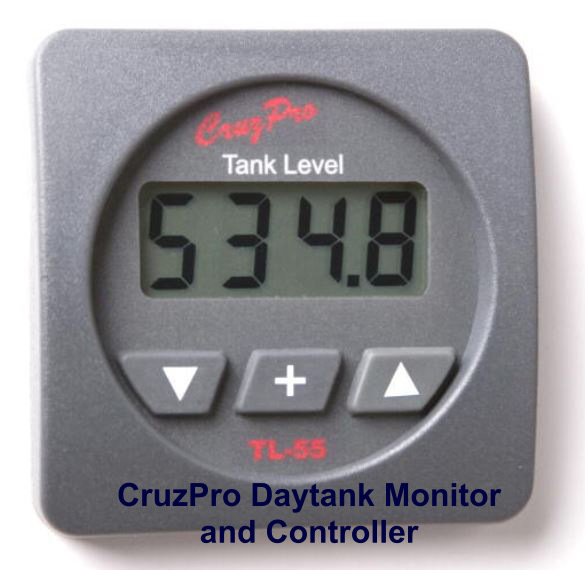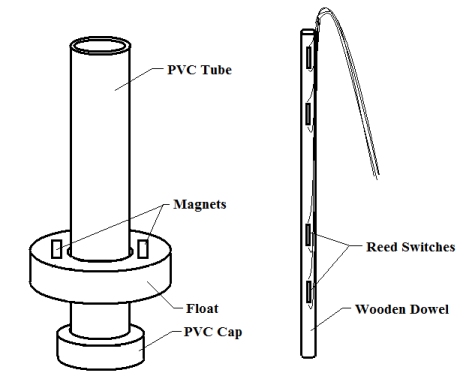The Blue View - Controller for the Daytank
/The purpose of the fuel pump is to deliver diesel from the main fuel tank(s) to the injector pump. If the fuel contains air bubbles or the flow is restricted or interrupted, the engine will sputter and quit. One of the advantages of a daytank is that it can give us a little warning if the fuel pump stops delivering fuel, but only if we have a way of detecting when the fuel level in the daytank is low. As it turns out, adding a low fuel alarm to a daytank is quite easy. There are several fuel tank gauges available that incorporate a built in alarm. If the fuel level in the daytank drops below a certain level, an LED on the gauge lights up. Some have built-in audible alarms and some allow an external alarm. These gauges can be purchased with the sending unit or will work with most standard sending units.
It would also be nice to control the electric fuel pump automatically. The ideal controller would turn the fuel pump on when the fuel level in the daytank drops to a certain level, then turn the pump off when the fuel level rises above another predefined level. It should also incorporate a low fuel alarm and have an overflow alarm in the event the fuel level gets too high.
There are a few controllers available that do all of that. One in particular, the TL-55 from CruzPro in New Zealand is an inexpensive unit that appears to be well designed. The controller costs about $120USD. Add to that the cost of the sending unit, shipping, the cost of other incidentals like wire, a fuse and connectors, etc. and the entire unit will probably be just around $200USD.
Another alternative is to build your own controller. If you are handy with a soldering iron, it is not that difficult. It took about two days to build the controller for my daytank, and ended up costing about $50USD. The design is quite straightforward and has been working quite well for several years now.
The figure below shows the level sensor portion of the controller. I used magnetic actuated reed switches that open or close when a magnet is in close proximity. The float, which has magnets epoxied to it, moves up and down with the level of the fuel. As it passes a reed switch, the switch closes.
The controller itself is housed in a plastic case. The three LEDs give an indication of the fuel and pump status. I attached the controller to the daytank. I also configured a remote LED and alarm in both the cockpit and the Nav station.
The complete design documentation, including schematics, parts list, assembly details and photos are contained in a separate document, which you can find on our website at http://www.nineofcups.com/boatprojects.html.
To help with the process, here is our three part playlist on Soldering Basics:




